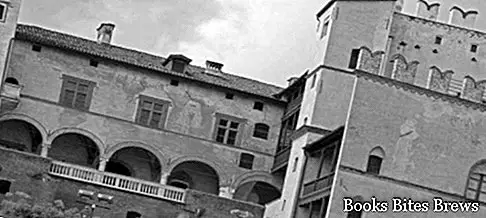What to see in Saluzzo, itinerary to visit the place where Silvio Pellico was born, including the main monuments and places of interest, including Casa Cavassa.
Tourist information
Located between the outlets of the Po valley and the Varaita valley, Saluzzo is an important agricultural and handicraft center.
With origins dating back to before the eleventh century, the village became the capital of the marquisate of the same name, reaching its peak in the fifteenth century.
Subjected to French domination from 1548, it became a Savoy domain in 1600, and Silvio Pellico, Italian patriot, poet and writer, was born there.
In via San Giovanni is the Casa Cavassa, a fifteenth-century building which was renovated in the early sixteenth century, on whose facade opens the beautiful Renaissance portal made of marble in 1523 by Sammicheli.
Inside, used as a museum, you can admire a remarkable collection of works of art, including in particular the Madonna della Misericordia, a fifteenth century painting attributed to the master of Elva, as well as various artistic objects and memorabilia by Silvio Pellico.
Nearby is the Gothic church of San Giovanni, which is one of the major monuments of Saluzzo, built on the remains of a thirteenth-century chapel, between 1330 and 1504.
On the left is the low but massive bell tower from the late sixteenth century, the square-shaped Gothic cloister is very interesting.
What see
Inside, the apse, semi-octagonal in shape and made of expertly decorated green stone, in the typical forms of the late Gothic French style, as well as the wooden choir and the magnificent ciborium deserve attention.
In the chapter house, which dates back to the beginning of the sixteenth century, the mausoleum of Galeazzo Cavassa is conserved, a work by Matteo Sammicheli built between the fifteenth and sixteenth centuries.
At the bottom is the tomb of Ludovico II, made by Briosco in the sixteenth century.
Recommended readings- Alessandria (Piedmont): what to see in 1 day
- Langhe (Piedmont): what to see among castles, villages and vines
- Piedmont: Sunday day trips
- Oropa (Piedmont): what to see
- Cherasco (Piedmont): what to see
In the same square stands the municipal tower, built in the fifteenth century.
Along a typical road, on whose sides there are picturesque houses with mullioned windows and terracotta decorations, you reach the Castle, a thirteenth-century building built on behalf of the Marquises of Saluzzo, later renovated at the end of the fifteenth century and then transformed into a prison in 1800.
In Corso Italia there is the Cathedral, a huge building with Gothic shapes, built between 1491 and 1501 above the church of Santa Maria which was of medieval origin.
Inside the Cathedral there is a sixteenth-century triptych, depicting the Virgin, the Child and the Saints, as well as a marble altarpiece made by local artists in the sixteenth century and an interesting sixteenth-century polyptych by the master of Elva.




